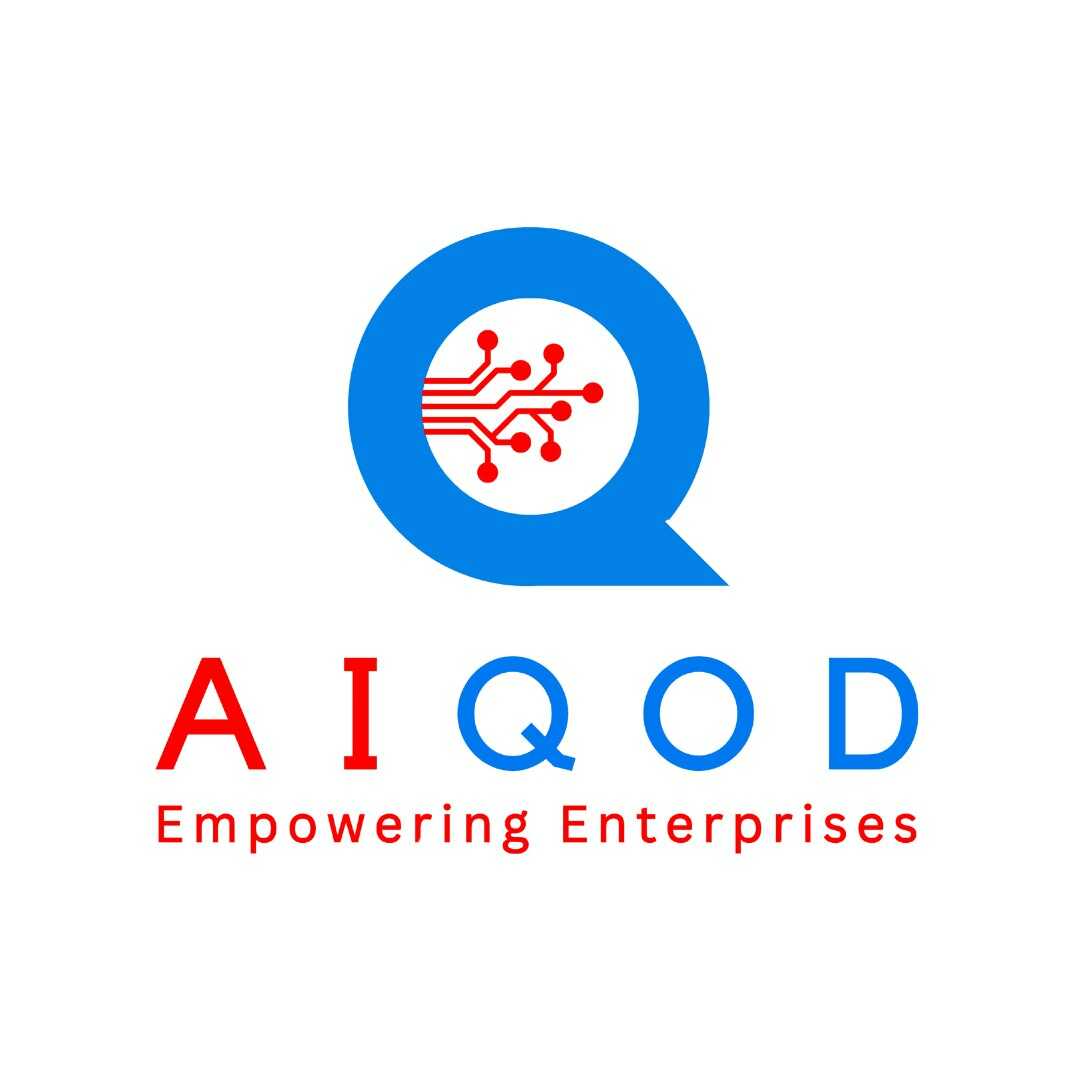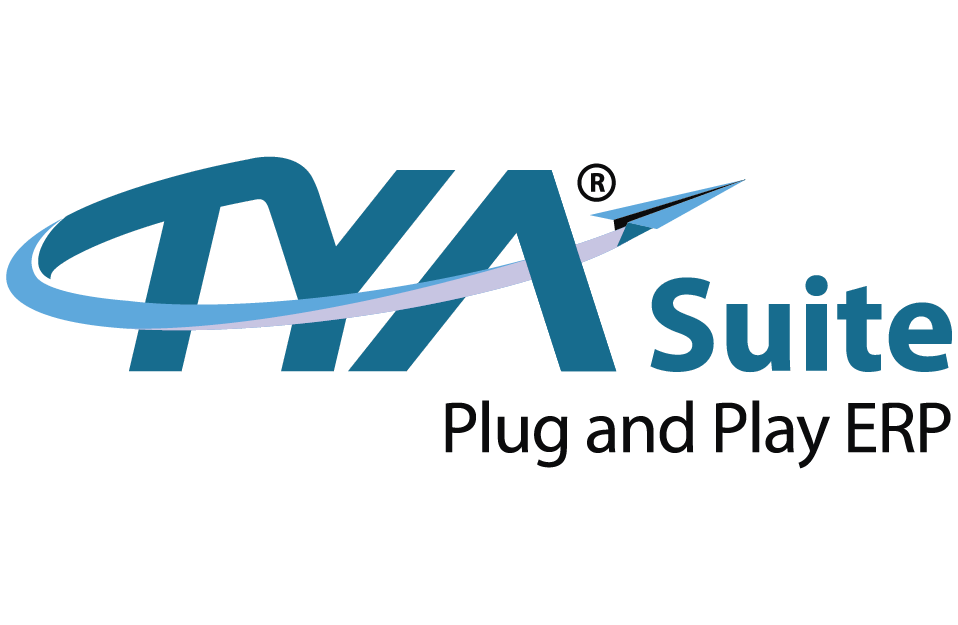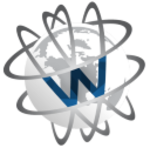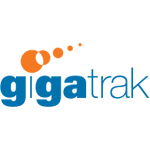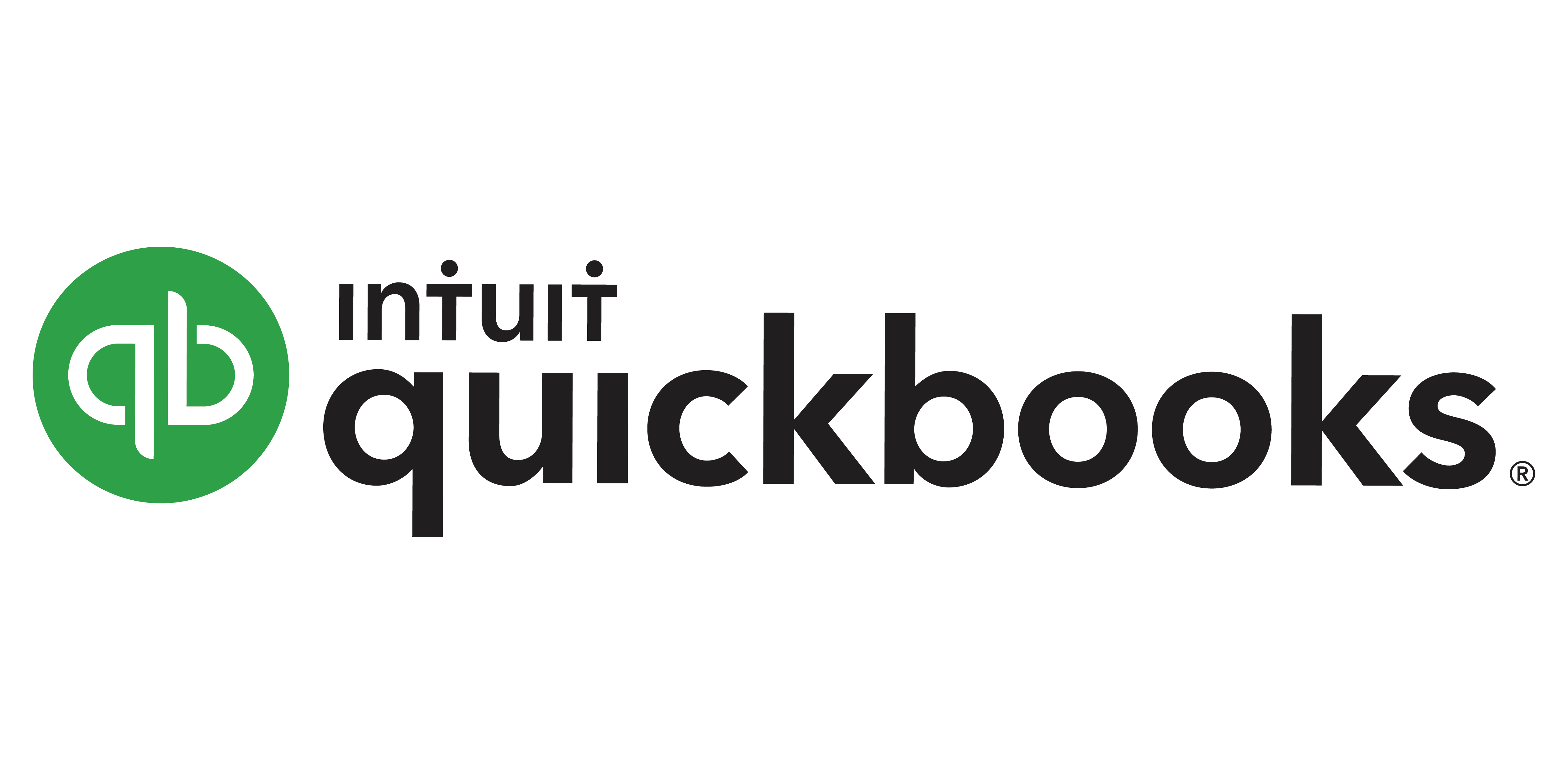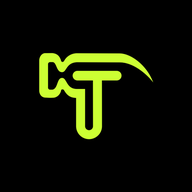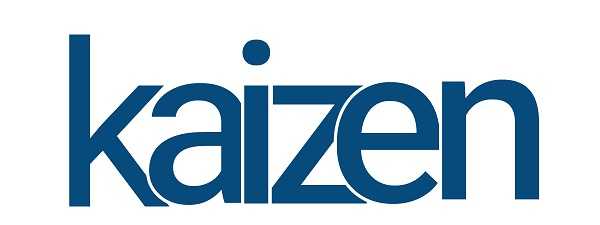Yes, asset tracking software may be accessible from various devices and platforms. Most modern asset tracking software is cloud-based, meaning it can be accessed from any device with an internet connection. Furthermore, many asset monitoring software companies feature mobile apps for iOS and Android smartphones, making it simple to keep track of assets on the go. This allows firms to keep accurate and up-to-date asset information regardless of the device or platform they use.
List of 20 Best Asset Tracking Software
AIQoD GeoTwinX solution for optimizing processes and increasing efficiency. This mobile-based application offers real-time tracking, scheduling, and advanced analytics to streamline your operations and drive results. With its user-friendly interface...Read More AIQoD GeoTwinX
ServiceChannel is facility management software that helps streamline maintenance processes, improve vendor management, and provide timely analytics. Its automated work order management, customizable reporting, and user-friendly interface make facilit...Read More ServiceChannel
TYASuite Asset Management, a top-of-the-line mobile and cloud-based solution designed specifically for engineering analysis and efficient asset management. This comprehensive software caters to various industries and offers a user-friendly interface...Read More TYASuite Asset Management
Teqtivity is the top IT Asset Management solution for organizations looking for a practical and budget-friendly approach. Our software provides accurate and trustworthy asset data, simplifying operations and enhancing efficiency with automated invent...Read More Teqtivity
Eltrix is software solution for enhancing Heat Rate management. By leveraging its advanced capabilities, businesses can easily detect and resolve any Heat Rate issues, achieving optimal performance. Eltrix also offers a specialized billing module for...Read More Eltrix
WiseTrack is an advanced asset management software that offers seamless integration across multiple platforms including mobile, web, and desktop. Through its powerful features, organizations can easily track equipment, inventory, and public safety as...Read More WiseTrack
GigaTrak is a barcode tracking software for efficient asset, tool, document, and inventory management. Our solution, available in both cloud-based and self-hosted options, offers user-friendly interfaces, advanced capabilities, and excellent customer...Read More GigaTrak
itemit is a asset management software designed for businesses. With its cloud-based platform, it offers easy accessibility and can be used on both web portals and mobile devices, including iOS and Android. Keep track of your assets on-the-go, even wi...Read More itemit
eFACiLiTY Enterprise Asset Management is a solution designed to efficiently monitor, maintain, and control assets across various levels, organizations, and sites. With its advanced capabilities, it enables seamless tracking, scheduling, and managemen...Read More eFACiLiTY® Enterprise Asset Management
nTireCAMS, the pinnacle of asset management software for enterprises. This comprehensive solution guarantees adherence to US GAAP and SOX regulations, leaving no space for inaccuracies. Say farewell to tedious manual tracking and welcome a seamless a...Read More nTireCAMS
Tenna is a construction operations software designed to improve equipment management and drive efficiency. Featuring a user-friendly interface, Tenna seamlessly connects field, shop, and office teams, equipping them with powerful tools for streamline...Read More Tenna
QuickBooks Online, the premier accounting software for entrepreneurs and business owners. Streamline your financial management with its intuitive interface, top-notch security measures, and cutting-edge features such as Online bank connectivity and W...Read More QuickBooks Online
AGP Asset Management: the revolutionary software built for efficient enterprise asset management. Our solution offers convenient tools for importing and creating assets, along with features for tagging, allocation, and reconciliation. compliant with...Read More AGP Asset Management
TOOLTRIBE solution for hassle-free tool tracking in the field. Streamline your inventory process with our user-friendly mobile app, no need for complex software or sensors. Download TOOLTRIBE Pro and have total control over your tools, bidding farewe...Read More Tooltribe
Infor EAM is a software solution designed to help businesses efficiently manage, maintain, and track their assets. With its powerful features, users can make informed decisions on maintenance, inventory, warranty, risk management, and strategic plann...Read More Infor EAM
AssetSonar is a asset tracking and management solution for IT departments. Our software is specifically designed to streamline processes, making it easier for you to monitor and organize IT assets across different locations and departments. Say goodb...Read More AssetSonar
AssetCloud is a asset management solution that simplifies tracking, check-in/out procedures, audits, and reporting effortlessly. Bridging the gap between virtual and physical assets, it eliminates manual tasks and guarantees precise management. From...Read More AssetCloud
My SAM the cloud-based software for asset management. Simplify the process of tracking and sustainable management of all your assets, whether physical or non-physical. With complete customization options and a user-friendly interface, My SAM is solut...Read More My SAM
CHEQROOM is a asset management solution for efficiently tracking and reserving valuable equipment. With advanced features such as live monitoring and mobile access, businesses can streamline their processes, save time on preparation, and make informe...Read More CHEQROOM
Kaizen CAFM is a facility management software that comes equipped with a convenient mobile app for your FM and field staff. Bid farewell to reactive maintenance and streamline your processes to save time. With its advanced features including inspecti...Read More Kaizen CAFM
Learn More About Asset Tracking Software
- What Is Asset Tracking Software?
- What Are The Recent Trends In Asset Tracking Software?
- Benefits Of Using Asset Tracking Software
- Important Factors To Consider While Purchasing Asset Tracking Software?
- What Are The Key Features To Look for In Asset Tracking Software?
- Why Do Businesses Need Asset Tracking Software?
- How Much Time Is Required To Implement Asset Tracking Software?
- What Is The Level Of Customization Available In Asset Tracking Software?
- Which Industries Can Benefit the Most from Asset Tracking Software?
- Conclusion
What Is Asset Tracking Software?
Asset tracking software, often known as asset management software, is a digital application that allows a company or organization to track and monitor its physical assets. These assets may include equipment, vehicles, tools, or other important resources. Businesses can use asset monitoring software to retain complete records of their assets, including their location and usage habits.
One of the primary benefits of asset monitoring software is the ability to provide real-time visibility into an organization's assets. This implies that consumers may get up-to-date information about the location and status of their assets, making it simple to spot any possible problems or anomalies. Furthermore, asset monitoring software may simplify procedures like inventory management and maintenance scheduling, allowing organizations to cut costs and boost productivity.
Asset tracking software also supports a range of tracking methods, including QR codes, barcodes, RFID tags, and GPS monitoring. These strategies enable firms to select the most appropriate tracking solution for their specific requirements and budget.
Furthermore, with the rise of cloud-based asset monitoring software, organizations may now access their asset data from anywhere, at any time, and on any device with internet access.This current technique eliminates the need for manual data entry and the possibility of human error, making the asset monitoring process more accurate and dependable.
What Are The Recent Trends In Asset Tracking Software?
Asset monitoring software has become a crucial tool for businesses of all kinds, allowing them to properly manage physical assets while tracking their location and usage in real time. Asset monitoring software has grown dramatically in recent years, because to advances in technology such as the Internet of Things (IoT) and artificial intelligence (AI). Buyers of asset tracking software should be aware of the following recent trends:
1. Integration With IoT Devices: The combination of asset tracking software and IoT devices allows organizations to track and manage their assets in real time. Businesses may now obtain reliable and up-to-date information on the location, status, and condition of their assets via sensors and tags, removing the need for manual tracking.
2. Advances In RFID Technology: Radio Frequency Identification (RFID) technology has revolutionized asset tracking. It enables organizations to follow their assets without the necessity for direct or line-of-sight communication. RFID technology has become more economical, accurate, and scalable, making it an increasingly attractive choice for asset tracking software.
3. Mobile And Cloud-Based Solutions: As mobile devices and remote work become more prevalent, asset tracking software has transitioned to mobile and cloud-based solutions. This enables users to access real-time asset data from any location at any time, making asset management easier even on the go.
4. Predictive Analytics: Asset tracking software now includes predictive analytics elements, which allow firms to foresee asset maintenance and replacement needs. This saves businesses time and money by avoiding costly downtime and assuring the ongoing availability of important assets.
5. Automation and AI: Asset tracking software can now automate operations like data entry, asset allocation, and reporting. This not only saves time and effort, but it also lowers human mistake, improving asset management efficiency and accuracy.
Benefits Of Using Asset Tracking Software
Asset monitoring software is an effective tool for firms seeking to streamline processes and improve efficiency. Here are some of the major advantages that this software can provide:
1. Accurate Inventory Management: Asset tracking software enables firms to quickly track both physical and digital assets. This enables for more accurate inventory management, lowering the likelihood of overstocking or stockouts. It also allows firms to rapidly find and retrieve certain assets as needed.
2. Improved Asset Maintenance: By tracking and managing assets in real time, firms can keep up with maintenance and repairs, decreasing downtime and extending asset life. This can result in significant cost reductions in the long run.
3. Improved Security: Asset tracking software can assist firms in improving their security procedures by providing unique identifiers to each asset. This makes it easier to detect and prevent theft or loss of important items.
4. Increased Productivity: When employees can quickly and easily identify and access assets, they spend less time looking for or waiting for them, helping them to be more productive and efficient.
5. Better Decision-Making: Asset tracking software provides data and insights that can assist firms in making more informed decisions about their assets. This includes determining which assets are underutilized, should be replaced, and can be repurposed for a higher return on investment.
6. Scalability: Another advantage of asset tracking software is its scalability. As a company grows and acquires more assets, the software can easily handle the increased volume while continuing to provide reliable tracking and administration.
7. Cost-effective: While asset tracking software does need an initial investment, it can result in long-term cost benefits. Businesses can increase their return on investment by maximizing asset usage, preventing losses, and lowering maintenance and repair expenses.
Important Factors To Consider While Purchasing Asset Tracking Software?
Introduction: Asset monitoring software helps firms of all sizes efficiently track and manage their assets. It can save organizations time and money by making it easier to track and maintain assets including equipment, technology, and inventory. However, with so many options on the market, it can be difficult to select the best asset monitoring software for your organization. To help you make an informed selection, here are some key considerations to consider when selecting asset monitoring software:
1. User-Friendly Interface: The first and most important consideration is the software's ease of use. A convoluted and confusing design can lead to user irritation and decreased productivity. Look for software that has a basic, intuitive design that non-technical users may easily operate. This will ultimately save time and money on training.
2. Scalability: The software's scalability is also a significant consideration. As your company grows, so will your asset tracking requirements. It is critical to select software that can support your company's expansion and handle a larger volume of assets without causing performance concerns. This eliminates the need for frequent software updates or switching to a different system in the future.
3. Customizability: Each firm has distinct asset tracking requirements and processes. It is critical to select software that provides customization choices. This allows you to customize the program to meet your individual needs, making it more efficient and productive for your organization. Make sure the software allows you to add custom fields, produce custom reports, and customize the user interface.
4. Integration: The optimal asset monitoring software should work easily with your existing systems, such as accounting or ERP software. This allows for easy data transfer and eliminates errors caused by human entry. Integration also streamlines operations and provides a more complete picture of your assets and finances.
5. Mobile Compatibility: In today's fast-paced corporate climate, the ability to access real-time data while on the road is critical. Choose software that is mobile friendly, such as a mobile app or a responsive web interface. This allows you to update and access asset information from anywhere, making it easier to track assets in the field or at remote locations.
6. Reporting and Analysis: Asset tracking software is designed to do more than just track assets; it also provides vital insights into asset utilization and performance. Look for software with extensive reporting and analysis capabilities, so you can track asset utilization, detect patterns, and make data-driven decisions.
7. Data protection: Because sensitive asset information is housed in the program, it is critical to select a system that emphasizes data protection. Look for software that encrypts data and uses role-based access restrictions to guarantee that only authorized individuals have access to critical information. Regular data backups and disaster recovery procedures should be in place.
What Are The Key Features To Look for In Asset Tracking Software?
When looking for the best asset monitoring software for your organization, you must examine the important aspects that will best meet your individual requirements. Here are some crucial things to consider when considering various options:
1. Barcode/RFID Scanning: This capability scans unique barcodes or RFID tags to easily and accurately track physical assets. It avoids human data entry errors and expedites the tracking process.
2. Real-time Tracking: Real-time tracking capabilities allow you to monitor the position and status of your assets at any time. This capability is particularly beneficial for high-value items or ones that often change locations.
3. Customizable Fields: With the option to configure data fields, you may track unique information about your assets, such as purchase date, maintenance history, and warranty details. This feature guarantees that all relevant data is readily available and arranged.
4. Mobile App: A mobile app provides on-the-go access to the asset monitoring system, making it easier to follow assets that are constantly on the go. It also allows field personnel to scan assets quickly and update data in real time.
5. Reporting and Analytics: A robust reporting and analytics function provides useful insights into asset utilization and maintenance, as well as the ability to find cost-saving and optimization opportunities.
6. Integration with Other Systems: Asset tracking software should be able to work seamlessly with other corporate systems like accounting or ERP. This feature ensures that data is accurate and consistent throughout all platforms.
7. Cloud-Based: Cloud-based asset tracking software provides remote access, automatic updates, and easy scalability as your company grows.
8. User-Friendly Interface: The user interface should be intuitive and simple to browse, allowing employees to understand and use the software successfully.
9. Customizable User Permissions: This feature allows you to restrict user access to the asset tracking system, ensuring that only authorized workers may make changes.
10. Multi-Language Support: If your company works internationally, having multi-language support is critical for effective communication and collaboration across borders. Overall, the ideal asset monitoring software will be determined by your company's individual demands and expectations. Consider these crucial qualities when selecting the finest solution for tracking and managing your assets effectively and efficiently.
Why Do Businesses Need Asset Tracking Software?
Asset monitoring software is a critical tool for businesses of all sizes. It offers an efficient and effective method of tracking, managing, and monitoring assets including as equipment, inventories, and even workers. Here are the main reasons why firms need asset monitoring software:
1. Stay Organized And Avoid loss: Asset tracking software enables firms to manage their assets in a centralized system, removing the need for manual tracking techniques such as spreadsheets or paper records. This reduces human error and prevents the loss or theft of important items.
2. Increase Efficiency And Productivity: Asset tracking software streamlines operations and saves time for staff by utilizing real-time tracking and automation. This increases productivity and allows organizations to focus on more vital duties.
3. Improve Asset Utilization: By properly tracking asset location and usage, firms can identify underutilized or idle assets and redeploy them to increase efficiency, cut costs, and improve returns on investment.
4. Ensure Regulatory Compliance: Certain businesses, such as healthcare and finance, must follow tight asset management standards. Asset tracking software assists firms in remaining compliant by maintaining accurate records and audit trails for assets.
5. Lower Maintenance Costs: Asset tracking software may also manage an asset's maintenance history, schedule preventative maintenance, and give notifications about upcoming maintenance activities. This helps to extend the life of assets and reduces the need for expensive maintenance.
6. Improve Customer Service: Asset tracking software enables organizations to easily find and retrieve specified assets, resulting in faster and more efficient service for consumers. This also promotes customer trust and loyalty.
7. Get Insights And Make Data-Riven Decisions: Asset tracking software captures and stores information about asset usage, location, and performance. This data can be utilized to develop reports and analytics, allowing organizations to make more informed decisions about their assets.
8. Adapt To Remote Work: As remote work becomes more prevalent, asset tracking software enables firms to track and manage assets across different locations and devices, providing transparency and responsibility.
How Much Time Is Required To Implement Asset Tracking Software?
The implementation time for asset tracking software varies according to the solution and the size of your firm. It often takes a few days to a few months to properly develop and integrate the software with your existing systems. To gain a more accurate estimate of the time required, first determine the scope of the project.
This includes determining the amount and kind of assets to be tracked, the level of customization required, and any integrations with other software or hardware. Another element influencing implementation time is the complexity of your organization's processes and procedures. If you have well-defined and documented processes in place, implementation will most likely be faster than for a company with less defined procedures or those facing a big change in asset management methods.
The vendor you choose has a significant impact on the implementation timeline. It is critical to find a trustworthy and knowledgeable provider that can walk you through the process and provide assistance as needed. In addition, the speed of implementation is determined by your team's availability and resources. It is critical to dedicate sufficient time and personnel to ensure a smooth and timely implementation.
What Is The Level Of Customization Available In Asset Tracking Software?
"Asset Tracking Software" is a useful tool for firms who want to efficiently manage and track their physical assets. One of the most important considerations when selecting asset monitoring software is the level of customization available. To put it simply, customization is the ability to modify software to a business's specific goals and requirements. The level of customisation available in asset monitoring software varies according to the vendor and the capabilities supplied.
Here are some significant aspects to consider while assessing the customization possibilities for asset monitoring software:
1. User Interface Customization: Customization includes the ability to tailor the user interface to the user's preferences. This includes the ability to customize the layout, color scheme, and data structure to meet the user's specific requirements. Some software may provide a few pre-designed templates or themes to choose from, but others may allow complete customization.
2. Field Customisation: Field customisation is an important part of asset tracking software customization. It entails adding, editing, or removing fields from the software in order to capture critical business information. Businesses can insert fields particular to their industry or organization, making asset tracking more specialized and efficient.
3. Reporting And Analytics Customization: Businesses frequently need various sorts of reporting and analytics to track and analyze their assets. Customization in this area enables firms to select which data points to include in reports and develop reports that are tailored to their specific requirements. Advanced asset monitoring software may also include configurable dashboards that allow for real-time data tracking and analysis.
4. Integrations: Working with other software and systems is essential for optimizing asset management procedures. Customization possibilities here relate to the capacity to meet a company's specific integration requirements. A product that supports custom API integrations, for example, can be useful for a company with specific integration needs.
5. Label And Tag Customization: Asset tracking software frequently employs several types of labels and tags to identify and track assets. Customization options in this area enable firms to use their own labels and tags or to change the style and information on the labels provided by the software.
Which Industries Can Benefit the Most from Asset Tracking Software?
Asset monitoring software is an extremely useful tool for any company that owns and maintains assets. It enables firms to track their assets in real time, resulting in increased efficiency, lower costs, and better overall asset management. However, certain businesses can tremendously profit from the adoption of asset monitoring software.
Let's see which industries will profit the most from this technology.
1. Manufacturing Industry: The manufacturing industry relies heavily on the correct management and repair of assets such as equipment, machinery, and tools. Asset monitoring software can assist manufacturers maintain track of their assets, including their location and condition. This enables better maintenance planning, less downtime, and increased production.
2. Healthcare Industry: The healthcare industry is extremely asset-intensive, as hospitals, clinics, and other healthcare facilities must manage a huge amount of medical equipment and technology. Asset monitoring software can assist healthcare facilities in more efficiently managing their assets, avoiding equipment loss or misplacement and ensuring that critical medical equipment is always available when needed.
3. Transportation and Logistics Industry: The transportation and logistics industry relies on the ongoing movement of assets such as cars, containers, and packages. Asset monitoring software can assist organizations in this field monitor the position and condition of their assets in real time, allowing for improved route planning, lower transportation costs, and higher customer satisfaction.
4. Educational Industry: Schools and universities also have a large number of assets, such as IT technology, textbooks, and lab equipment. Asset tracking software can assist educational institutions in keeping track of their assets, ensuring that they are being used effectively, and preventing loss or theft.
5. Construction Industry: The construction sector also possesses a large number of assets, such as heavy machinery, tools, and building supplies. Asset monitoring software can assist construction organizations in tracking the location and usage of their assets, lowering the risk of theft and reducing downtime due to misplaced or lost equipment.6. Hospitality Industry. Hotels and resorts frequently maintain a large inventory of assets, including furniture, appliances, and technology devices. Asset tracking software can assist in tracking these assets, allowing for better maintenance planning, cost savings, and a consistent guest experience.
Conclusion
To summarize, investing in dependable and effective Asset Tracking Software can considerably benefit any firm that deals with assets. The appropriate software may provide significant insights and streamline operations in areas like as inventory management, equipment tracking, and general business efficiency. When examining alternative solutions, make sure to examine your company's specific demands and requirements.
Look for software that has customized features, is compatible with your existing systems, and gives outstanding customer service. Don't forget to consider costs and scalability to secure your business's long-term viability. Implementing Asset Tracking Software will help you enhance your asset management processes, minimize errors, and make better use of your assets, resulting in considerable cost savings and higher production.
We hope this buyer's guide has offered useful information and helped you make an informed selection. With the appropriate software, you can take your business to the next level while staying one step ahead in today's competitive industry.
Asset Tracking Software FAQ's
Can Asset Tracking Software Be Accessed Across Multiple Devices And Platforms?
Is Asset Tracking Software Future-Proof and Adaptable To Emerging Technologies Like Ai, Blockchain or Iot?
Yes, asset monitoring software is future-proof and easily adaptable to new technologies such as AI, blockchain, and IoT. These technologies are continually changing, and asset monitoring software is designed to keep up. Asset tracking software improves accuracy, efficiency, and real-time tracking capabilities through the use of AI, blockchain, and IoT. This ensures that your asset management system is up to date and capable of handling future technological advancements.
Is There a Free Trial Offered To Assess Asset Tracking Software Before Committing?
Yes, most asset monitoring software vendors provide a free trial period to allow potential clients to evaluate the product's features and functionality before committing to a purchase. This provides hands-on experience and a greater knowledge of how the program can help their business. It is recommended that you use the trial time to confirm that the program matches your specific needs and requirements before making a commitment.
Does Asset Tracking Software Offer Data Security Features and Meet Regulatory Compliance Standards?
Yes, most asset monitoring software systems have powerful data security safeguards to protect sensitive information. They use encryption technologies, secure servers, and access control to protect data from unauthorized access. In addition, many software solutions follow regulatory standards such as HIPAA, SOX, and GDPR to protect data security and confidentiality. This guarantees that your firm adheres to regulatory compliance standards while avoiding potential fines or penalties.
Can Asset Tracking Software Integrate Seamlessly with Existing Tools and Platforms?
Asset tracking software can easily interface with existing tools and platforms. Most contemporary asset tracking software is designed to be very versatile and work with a wide range of devices and systems. Asset monitoring software may readily interface with popular technologies like ERP systems, barcode scanners, and GPS trackers thanks to open APIs and integrations. This enables for a more streamlined and effective asset management procedure, optimizing the software's capabilities.

